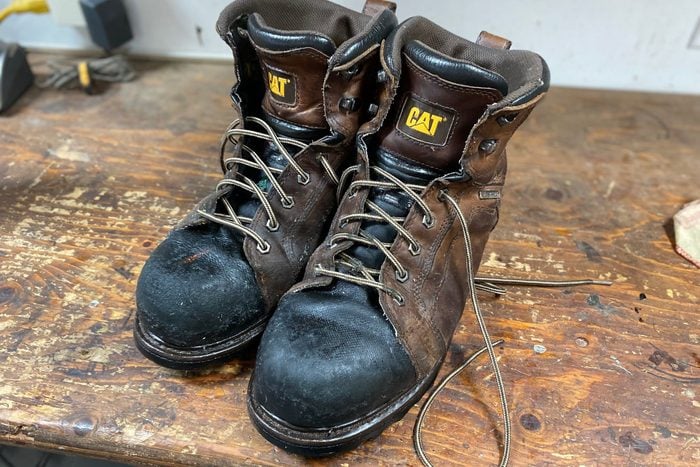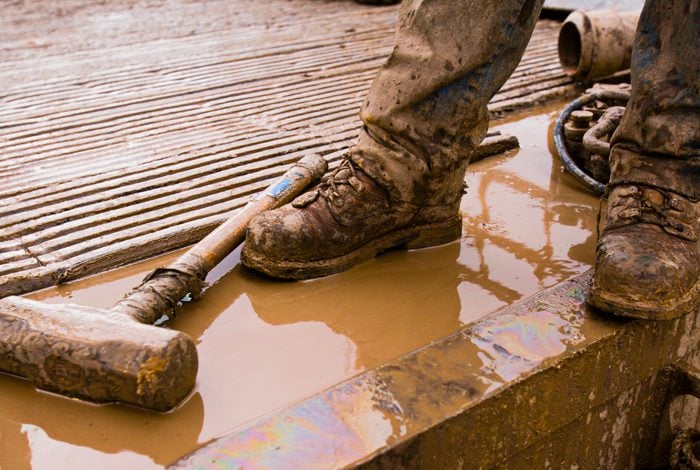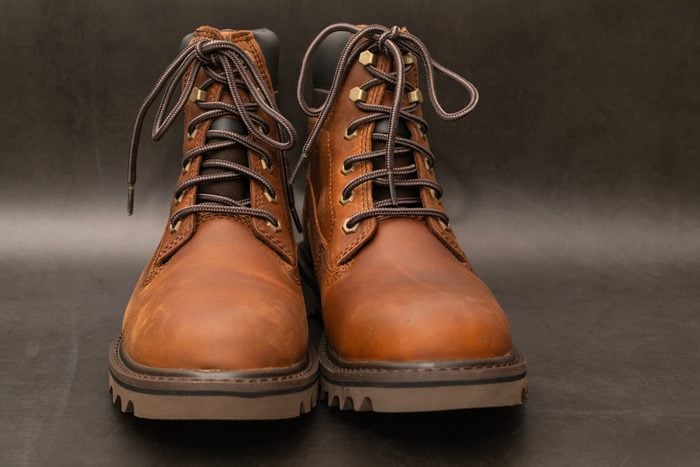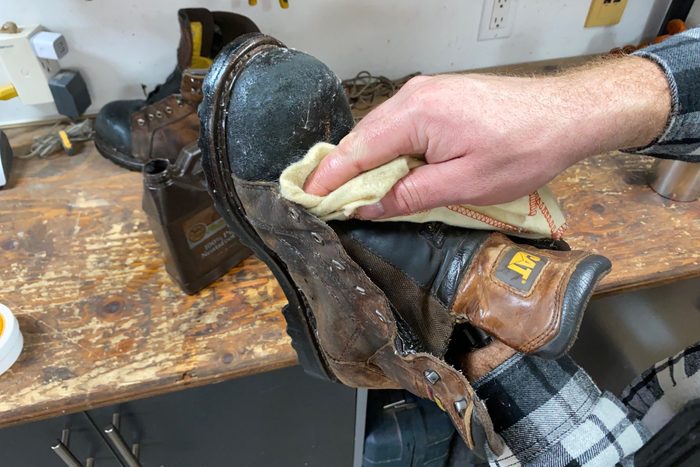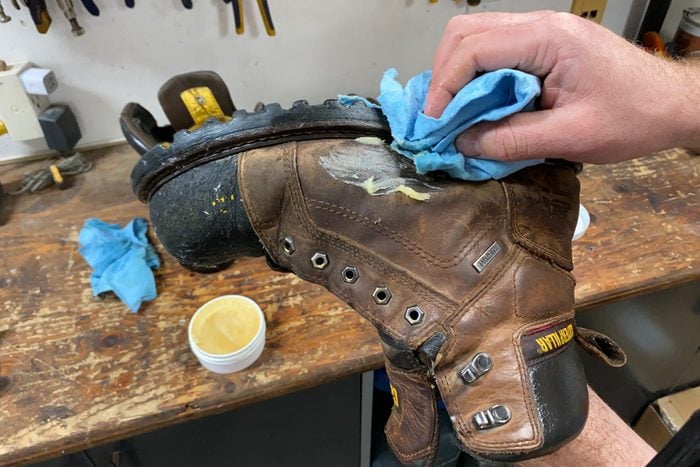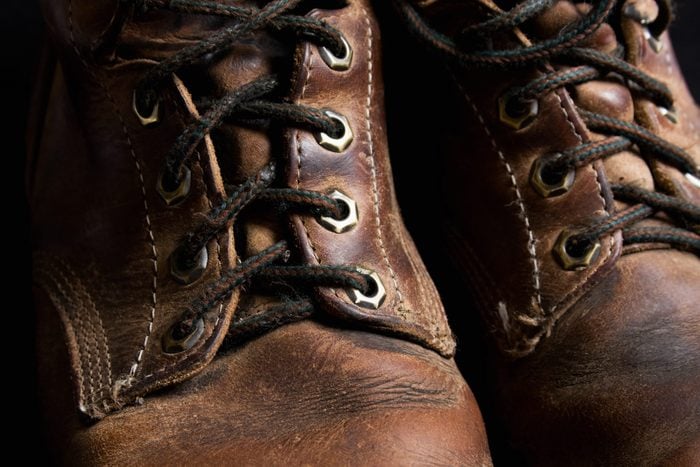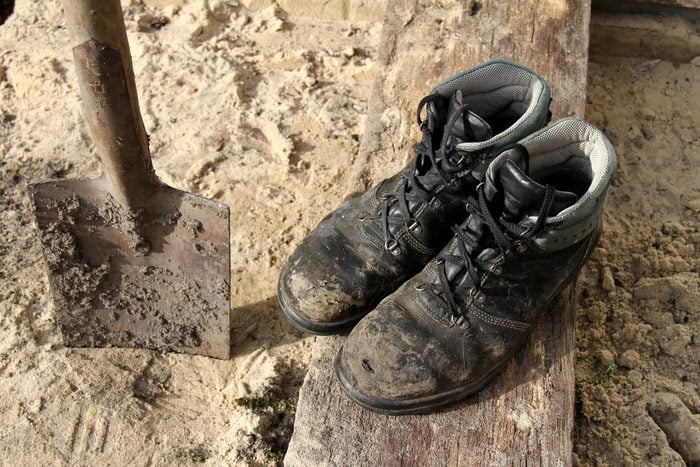Avoid Wet Areas
Avoid wearing your leather work boots for muddy jobs. Leather doesn’t handle water well, so if you want your boots to last, don’t get them wet. You can do lots to make your boots more water-resistant, but it’s better to avoid water in the first place. Have a wet job ahead of you? Wear rubber boots.
Keep Work Boots Clean and Dry
Sometimes dirt and moisture can’t be avoided. If your leather work boots get wet and muddy despite your best efforts, clean them as soon as you get home.
Take a gentle shoe brush and remove mud and debris from all cracks and crevices in the leather. It’s easy to miss caked-on mud under the eyelet flaps and the sides of the tongue, so be thorough. Store your boots somewhere warm where they can dry out.
Oil Work Boots Regularly
Leather oil boosts the water resistance of your work boots. My personal favorite is neatsfoot oil. It offers the best combination of leather preservation and softening of all the products I’ve tried.
Start by brushing off your boots thoroughly. Then use a clean, soft shoe shining cloth to apply the oil to your boots. Be thorough, generously rubbing the oil into all cracks and crevices. Then give it one to three hours to dry. I find applying oil every six months or so is optimal.
Apply Multiple Layers of Protection
When it comes to waterproofing your leather boots, more is better. Oiling them helps a lot, but I find it’s not enough on its own. That’s why I always finish up by applying leather boot wax on top of the oil.
The product I like best is generically called dubbin, and lots of brands make it. Make sure the leather oil you’ve applied is dry to the touch before cracking open the dubbin.
Use a fresh shoe shining cloth or disposable shop towel to rub it on, and make sure you work it into all cracks and crevices. As with the oil, I like to apply this every six months. Sometimes I’ll do it more often if I’ve been wearing my boots for lots of heavy, damp work.
Keep Spare Work Boot Laces On Hand
The first part of your work boots that will probably fail are the laces. My laces are always snapping, fraying and getting tied in knots. That’s why I stock at least one replacement pair at all times. Who wants to stop working because of a busted boot lace? Not me, and I’m betting not you, either.
Replace Work Boot Insoles
If you use your leather work boots for lots of heavy labor, chances are you’ll wear through the insoles in a few years or less. I find the heels of the insole always go first.
Don’t ignore this when it happens. Worn-out insoles will not only make your boots much less comfortable, they’ll allow your heel to start wearing through the bottom, too. Avoid this by buying high-quality replacement insoles.

